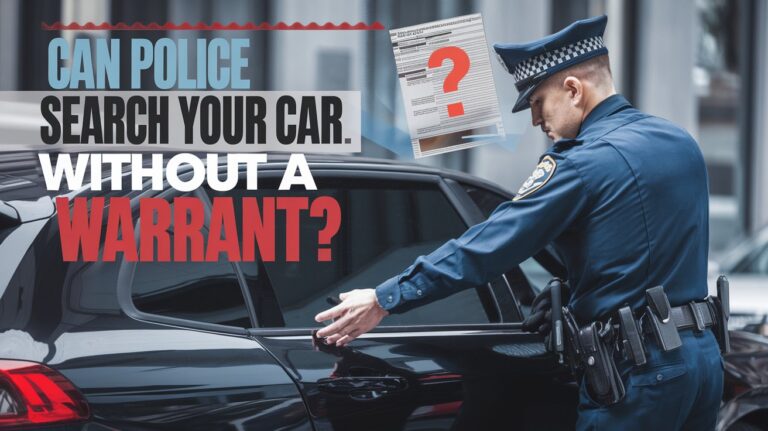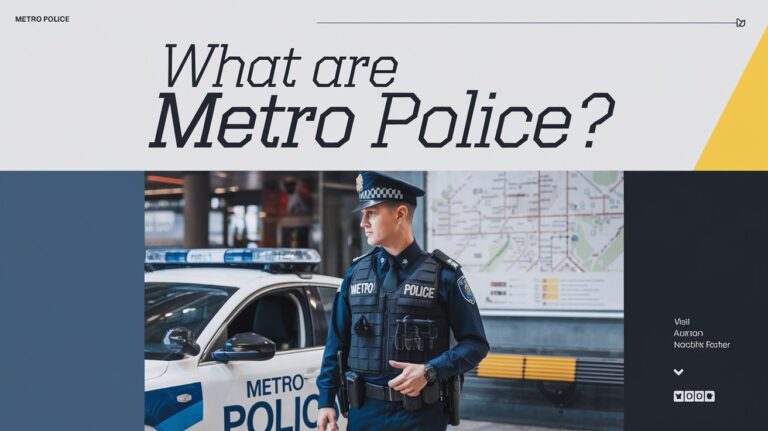How to Pass the Police Fitness Test: Training and Tips

Aspiring law enforcement officers need to show top-notch physical skills to pass the police fitness test. This guide will help you master the test’s endurance, strength, and agility parts. Whether you’re aiming for the Houston Police Department or another elite force, these skills are vital.
The test checks your overall fitness, looking at your heart health, muscle strength, and flexibility. Each police department has its own test, but common parts include a 1.5-mile run, push-ups, and sit-ups. Knowing the test specifics and training well can boost your chances of success.
To get ready for the test, focus on endurance, strength, and agility training. Mix in high-intensity interval training (HIIT), steady running, and specific exercises. Always keep training consistent and gradually increase the intensity to reach your goals.
Police Fitness Test Requirements and Standards
Aspiring police officers face tough physical tests to show they’re ready for the job. These tests include timed runs, push-ups, sit-ups, and vertical jumps. Some tests even mimic real police work, like obstacle courses with weights.
Minimum Performance Standards
Police fitness tests have different standards for men and women, and for different ages. For example, men aged 20-29 need to do 40 sit-ups in one minute. Women aged 30-39 must do at least 18 push-ups.
Men aged 20-29 must run 1.5 miles in 11:58 minutes or less. Women in the same age group need to do 41 sit-ups to pass.
Gender and Age Classifications
Police departments set different fitness standards for men and women, and for different age groups. For instance, men aged 30-39 must do 27 push-ups to pass. Men aged 40-49 need to run 1.5 miles in 13:11 minutes or less.
| Fitness Test | Male (20-29) | Female (20-29) | Male (30-39) | Female (30-39) | Male (40-49) |
|---|---|---|---|---|---|
| Push-ups (1 min) | – | – | 27 | 18 | – |
| Sit-ups (1 min) | 40 | 41 | – | – | – |
| 1.5-mile Run (min:sec) | 11:58 | – | – | – | 13:11 |
Essential Running Components for Test Success
Running is key in police fitness tests, with a 1.5-mile run being a big part. Men need to finish in 10:30 to 12 minutes, and under 9:44 is excellent. Women aim for 13:30 to 16 minutes, with under 12:30 being top.
To get ready, start with short runs and work up to over 1.5 miles. Using elevation masks and weighted vests can boost stamina. The test also includes a 300-meter sprint, which needs interval and sprint training for speed and power.
A good running program is vital for cops to pass the test. It should increase distance and intensity slowly. By adding special training, candidates can improve their cardiovascular endurance and police fitness test running skills.
Mastering Push-Up Techniques and Requirements
Push-ups are a key part of police fitness tests. Candidates must do 25 push-ups in a row. It’s important to learn the right way to do this exercise for the police academy push-up test.
Keep your core tight, arms close to your body, and touch your chest to the ground briefly. These steps are crucial for correct push-up technique.
Proper Form and Execution
Start in a plank position with hands shoulder-width apart. Arms should be straight, and your body should be straight from head to heels. Engage your core and keep your elbows close to your sides as you lower your chest.
Pause when your chest almost touches the ground. Then, push back up to the starting position, fully extending your arms.
Progressive Training Methods
- Try to do 100 push-ups a day. Start with what you can do and increase it as you get stronger.
- Add different push-up types like incline, wide, weighted, and diamond push-ups. They work different muscles and improve your upper body and core.
- Keep increasing the number of push-ups or sets as you get better and more endurance.
Common Push-Up Variations
Trying different push-up types can make you stronger for police work. It also gets you ready for the police academy push-up test. Here are some popular ones:
- Incline push-ups: Do these with your hands on something higher. It makes it easier because you’re pushing up less.
- Wide push-ups: Place your hands wider than shoulder-width apart. This targets your chest and shoulders.
- Diamond push-ups: Your hands are together, forming a diamond shape. This focuses on your triceps.
- Weighted push-ups: Use a weight plate or dumbbell on your back. It makes the exercise harder.
Building Core Strength Through Sit-Up Training
Sit-ups are key in the police fitness test, showing how strong your abs are. They are vital for those wanting to join law enforcement. Each department has its own rules, but learning the right sit-up form is key.
When doing sit-ups, place your hands behind your head and lift up until your elbows meet your knees. Make sure your back hits the ground when you go back down. This way, you get the most out of the exercise and avoid injuries. Add exercises like reverse crunches, planks, and Russian twists to strengthen your core.
| Location | Sit-Up Requirements |
|---|---|
| Chicago, IL | For females over 50, the required sit-ups range from 13 to 37. For males aged 21-29, the required sit-ups fall into eight different levels. |
| St. Paul, MN | The sit-up requirements for the police fitness test are not specified in the available data. |
To do well in the police fitness test sit-ups, keep practicing. Aim to do 20-25 sit-ups in 30 seconds, 40-50 in one minute, 60-75 in 1:30, and 80-100 in two minutes. Boosting your abdominal strength is not just for the police fitness test sit-ups. It also helps with your abdominal strength for law enforcement tasks.
How to Pass the Police Fitness Test
Test Day Preparation
To pass the police fitness test, you must meet all standards. Start by preparing well. Increase your workout intensity and focus on weak areas.
On test day, a good warm-up is key. Pace yourself during timed events and keep your form right.
Performance Strategies
Knowing the test well and practicing can boost your score. Mental toughness is as crucial as physical fitness. Stay focused and determined to beat the test.
Here are tips to get ready for the police fitness test:
- Begin training 6-8 weeks early to build endurance.
- Do a mix of exercises like HIIT, running, swimming, and cycling to boost heart health.
- Practice the test parts, like the multi-stage shuttle run, to feel comfortable.
- Always use the right form and technique to avoid injuries.
- Drink lots of water before, during, and after workouts to stay hydrated.
- Imagine yourself succeeding and stay determined to pass the test.
Using these tips, you’ll be ready to ace the police fitness test. Good luck!
Vertical Jump Training Methods
To ace the police fitness test’s vertical jump challenge, you need a smart training plan. The test looks at how high you can jump, aiming for 16.5 inches or more. To boost your explosive power, include various exercises in your routine.
Box jumps are a top choice for vertical jump training. Jumping on and off a platform builds the elastic energy and muscle power needed. Jump squats are also great, combining explosive force with squat strength.
- Box jumps
- Jump squats
- Hip flexor stretches
- Deadlifts
- Bulgarian split squats
These exercises focus on the muscles that help you jump high, like your glutes, quads, and hamstrings. Increase the box height or the intensity of the jumps to get better.
Adding these agility drills for law enforcement to your training will help you prepare for the police fitness test vertical jump. Remember, regular practice and gradual improvement are key to mastering the vertical jump and passing the test.
Advanced Cardiovascular Conditioning
To pass the police fitness test, you need top-notch cardiovascular endurance. This goes beyond just running. Aspiring law enforcement officers should use advanced training to boost their aerobic capacity and fitness.
Sprint Training Programs
Sprint interval training is key for the 300-meter dash. It involves short, all-out efforts followed by rest. By making these sprints longer and harder, you build the power and speed needed for the test.
Endurance Building Techniques
For the 1.5-mile run, increase your running distance. Use elevation masks or weighted vests to make it harder. Training on hills or trails helps you get used to different conditions.
Mixing sprint training with endurance exercises, aspiring police officers can meet the cardiovascular training needs for law enforcement roles.
Strength Training for Law Enforcement Testing
Strength training is key for law enforcement testing. It helps you prepare for police work by focusing on specific exercises. These exercises build the strength and power needed for the tests.
Some tests, like the maximum bench press, measure your strength. Training for this test, along with other exercises, boosts your performance. Resistance bands are great for strength training anywhere, with moves like chest presses and overhead presses.
It’s important to train all major muscle groups for police work. This way, you’ll not only do well on tests but also handle the job’s physical demands better. Regular strength training is essential for success in police strength training and law enforcement physical preparation assessments.
Common Questions
What do police fitness tests assess?
Police fitness tests check endurance, strength, agility, and mental toughness. Each department has its own set of tests. These often include running, push-ups, sit-ups, and more.
How do test requirements differ across departments?
Each department has its own fitness test rules. Tests might include timed runs, push-ups, sit-ups, and vertical jumps. Some tests are designed to mimic police work. The standards can change based on gender and age.
What are the running requirements for police fitness tests?
Running is key in police fitness tests, often a 1.5-mile run. Men aim for 10:30 to 12 minutes, with under 9:44 being excellent. Women aim for 13:30 to 16 minutes, with under 12:30 being top.
How do I prepare for the push-up requirements?
Push-ups are a big part of police tests, needing 25 in a row. Start with 100 push-ups a day, increasing as you get stronger. Try different push-up styles to boost your strength.
What is the sit-up component of police fitness tests?
Sit-ups test your stomach strength and endurance. Some tests aim for as many sit-ups as you can in a minute. Others have specific targets. Focus on exercises like reverse crunches and planks to strengthen your core.
How can I pass the police fitness test?
To pass, you must meet all standards without fail. Prepare by gradually increasing your workout’s difficulty. On test day, warm up well, pace yourself, and keep your form right.
What training methods improve vertical jump ability?
The vertical jump test checks explosive power. Train with box jumps, jump squats, and stretches. Deadlifts and Bulgarian bench squats also help build muscle power.
How do I improve my cardiovascular conditioning for the police fitness test?
Good cardio is key for running parts of the test. Use sprint training, focusing on 300-meter sprints. Increase your running distance and use weighted vests to boost endurance.
What strength training is important for the police fitness test?
Strength training is vital for many test parts. Focus on exercises that match the test and police work, like bench presses and squats. Use resistance bands for on-the-go training.






